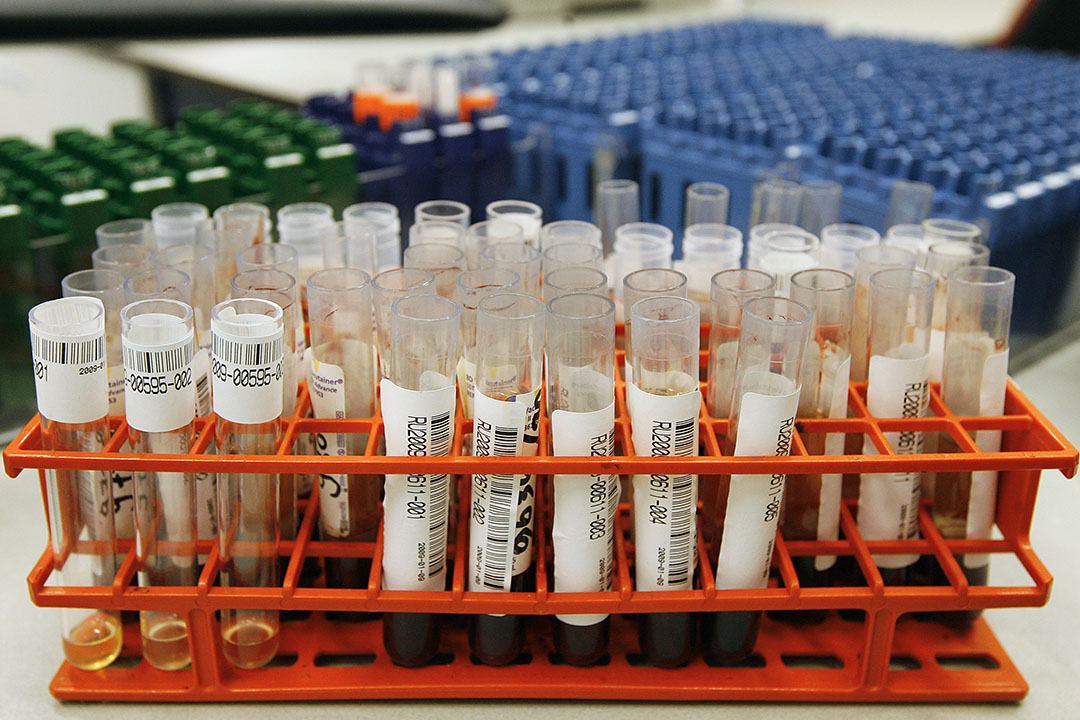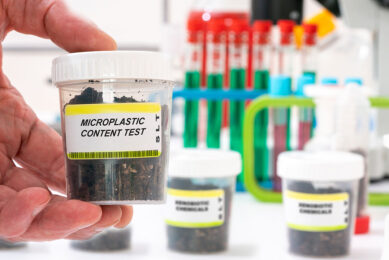Which biomarkers are out there to test gut health?

A proper working intestine is crucial for optimal animal performance. This is why a lot of research is dedicated to gut health. But can we find biomarkers to determine an effective gastrointestinal functionality? Researchers summarised the current knowledge on this topic in a new review paper.
In a new research paper, researchers from DSM Nutritional Products and the University of Melbourne in Australia looked into the possibility to find biomarkers to circumscribe (measure) an effective gastrointestinal functionality.
Gut health and its definition
Over the past few years, the concept of “gut health” has been attracting significant interest amongst nutritionists, veterinarians and scientists. However, a clear scientific definition is still lacking although it has been used repeatedly in animal health. A clear definition of gastrointestinal functionality is essential to monitor animal health, their welfare and to evaluate the effects of any nutritional intervention on animal performance.
Although gut health is difficult to define, Celi et al (2017) proposed 6 major domains related to gastrointestinal functionality. These domains include:
- Diet
- Effective digestion and absorption
- Normal and stable microbiota
- Effective immune status
- Gut mucosa
- Neuroendocrine and motor function of the gut
Development of biomarkers
The development of biomarkers of gastrointestinal functionality is crucial to advance our understanding of the events that affect the intestinal barrier, its functionality and the ecology of the gastrointestinal microbiota. While the knowledge of the digestive and absorptive mechanisms of the major macro and micro-nutrients is quite advanced, a large gap in the literature exists in relation to biomarkers of gastrointestinal permeability, gastrointestinal barrier function, biomarkers for the gut endocrine system or biomarkers that are indicative of the functional presence of beneficial microbiota or their metabolites. Therefore, the aim of the researchers with this review is to present animal nutritionists and veterinary scientists various markers of gastrointestinal functionality, with emphasis on non-invasive ones and highlighting the potential of specific markers.
Biomarkers per domain
In the paper, the researchers summarise the type of biomarkers reported in the literature, clustering them according to the 6 gastrointestinal domains recently identified by Celi et al. (2017), see above. The researchers identified the advantages and limitations for each of the biomarkers and reviewed their acceptance and use in different animal species (mostly farm animals) in both a research and a practical setting. Per domain the current biomarkers are listed.
Diet
Diet composition (ingredients, nutrients and additives) can modulate the development and functionality of the gastrointestinal tract, including its immune system and the microbiota harboured in it. The researchers write that there is an opportunity to develop a score system that would evaluate the general inflammatory properties of diet, considering both the role of pro- and anti-inflammatory dietary nutrients, such as the Dietary Inflammatory Index (developed in human nutrition).
Effective digestion and absorption
Effective gastrointestinal functionality is usually accompanied by optimal digestion and absorption. However, when inflammation occurs in the gastrointestinal tract, it can result in a decrease in digestive efficiency and reduced absorption on both macro and micronutrients. Biomarkers include: Total carotenoids, products of protein fermentation, faecal fat and fat soluble vitamins. These are measured in blood or faeces samples.
Normal and stable microbiota
The study of the gastrointestinal microbiome is emerging as an exciting and powerful area for managing not only gastrointestinal health, but that of the entire organism. The microbiome is linked with digestion and absorption, energy metabolism, immune system development and prevention of infections. Biomarkers include: lactate, succinate, phenol, p-cresol, indole, ammonia and hydrogen sulphide. These are measured in blood, urine, digesta content or faeces samples.
Effective immune status
Considering that more than 70% of the cells of the immune system are located in the gastrointestinal tract, it is not surprising that it is considered to be the largest organ of the immune system. Biomarkers of gastrointestinal inflammation and immune function can provide important information about the gastrointestinal tract’s interactions with the environment and how well the gastrointestinal barrier functionality is maintained. Biomarkers include: myeloperoxidase, alpha-1 antitrypsin, calprotectin, lactoferrin, acute phase proteins and cytokines amongst others. These are measured in the small intestine or the whole intestine.
Gut mucosa
The gastrointestinal mucosa, although continuously exposed to the gastrointestinal microbiota, is able to maintain the integrity of the intestinal barrier to the numerous insults posed by toxins, bacteria and their cell debris, antinutritional factors, while allowing the selective entry of essential nutrients. Several techniques are available to assess intestinal permeability and integrity. Biomarkers include: Lactulose (L), mucin 2, sialic acid, diamine oxidase, tight junction proteins and intestinal fatty acid-binding proteins amongst others. These are measured in the small intestine or the whole intestine.
Neuroendocrine and motor function of the gut
The neuroendocrine function of the gastrointestinal tract is a crucial communication arm of the so called ‘gut-brain axis’ which is involved in animal welfare and performance. The characterisation of gastrointestinal hormones may be used as valuable biomarkers. The researchers also see potential in continuous health monitoring by real-time temperature, sound and image analysis and how these systems can help in finding tools to measure the neuroendocrine and motor function of the gut. This field of research is relatively young in animal science and future studies would have to investigate the specificity of behavioural changes as biomarkers of gastrointestinal disorders.
A single ideal biomarker does not exists yet
There are inherent challenges in choosing what biomarker to measure, where and when to measure it. Several of the techniques currently available to monitor gastrointestinal functionality are invasive as they require animals to be sacrificed to collect samples. While the researchers of the current review believe that a single ideal biomarker does not exists yet, it would be ideal to have a biological marker that could be measured from the same animal over time, allowing thus longitudinal assessment of gastrointestinal functionality. Future research should focus on the establishment of a reference panel of biomarkers of gastrointestinal functionality to be used in farm animals. The panel would have to include biomarkers relative to the main domain areas discussed above (namely diet, intestinal permeability, gastrointestinal microbiota, digestion and absorption, effective immune status and neuroendocrine function of the gut) and would have to be validated against not only classic biomarkers of gastrointestinal functionality measured in research settings (Ussing chamber, gene expression studies, etc.) but also against phenotypes indicative of animal performance (daily gains, feed intake, mortality, etc). The researchers suggest that this panel of measurements could be combined in an index that could be used to monitor changes not only in gastrointestinal functionality, but also animal health and welfare.
The original paper has been published in Animal Feed Science and Technology.











